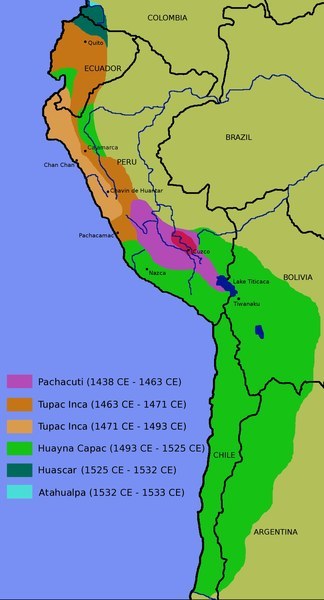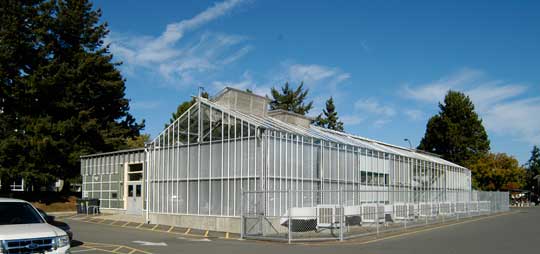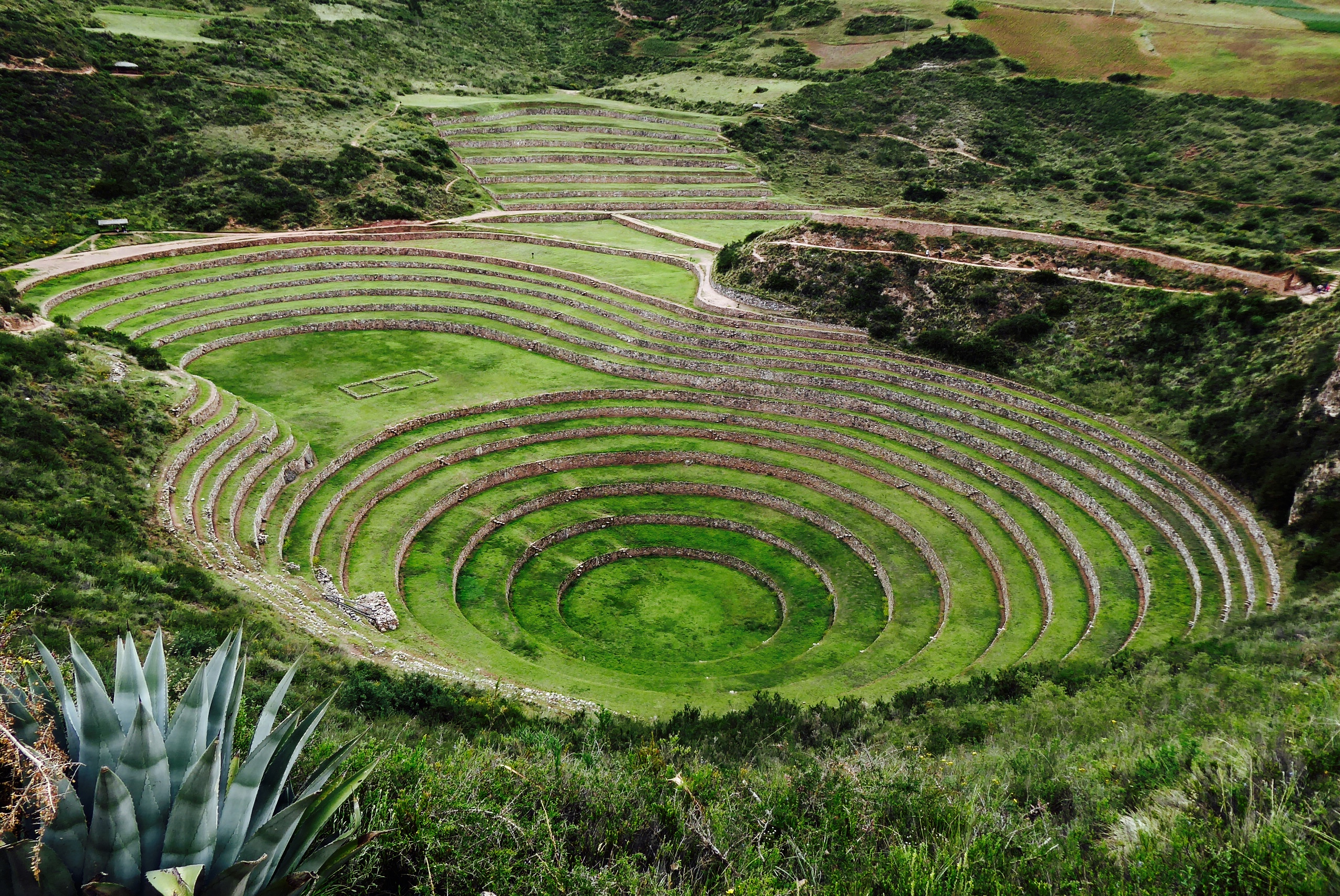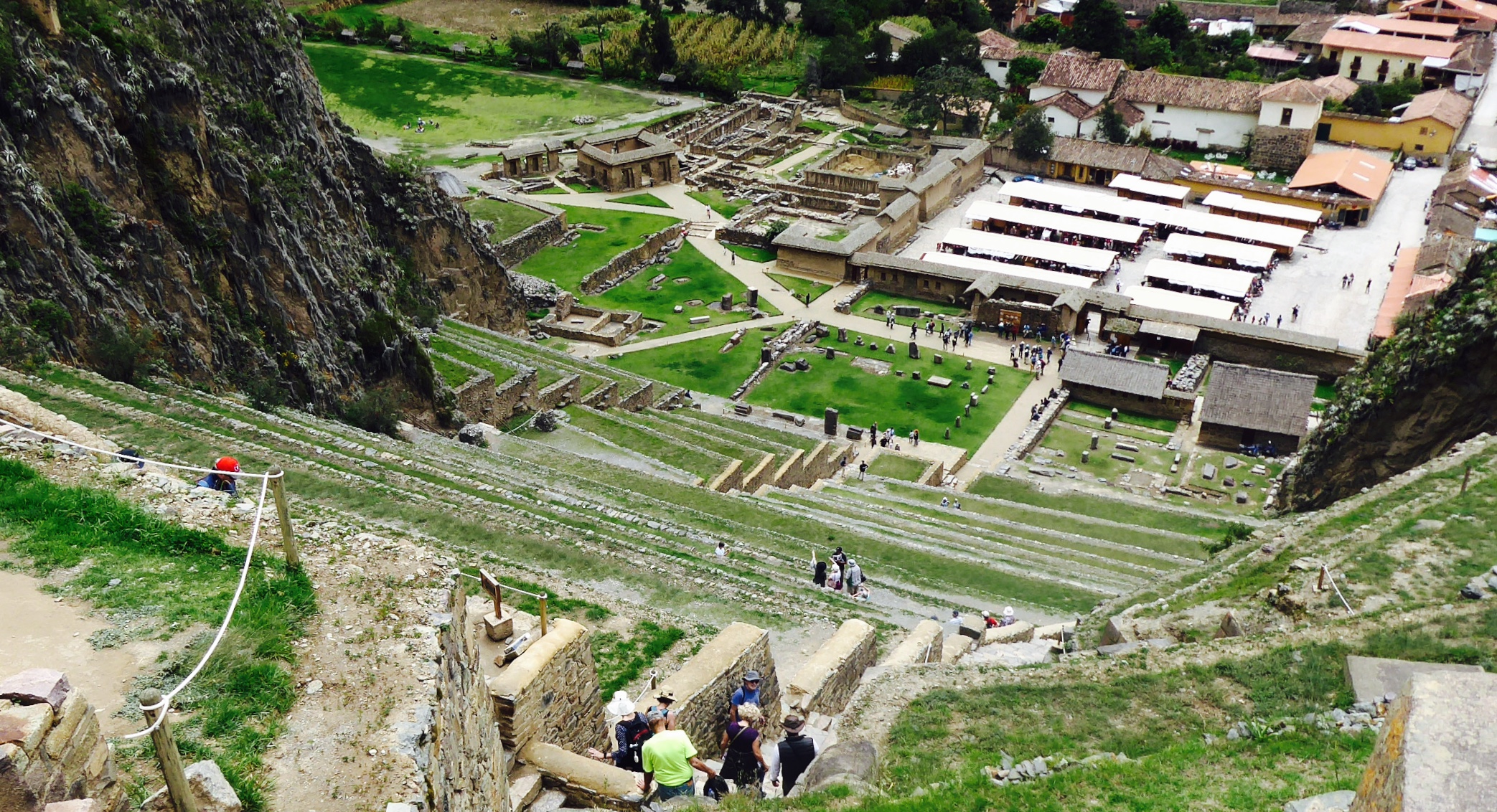Peru and the Inca: Back to the Future
Moray Archeological Site: These concentric rings, each raised by a height of four feet, reach a depth of 100 feet. The rings and partial rings create twenty-five distinct climatic conditions. This arrangement allowed the Inca, using scientific methods, to develop seed crops best suited to many different climatic conditions across the nation. (1)(2)
South America Post Links (these South America posts are not written in the order of travel)
A South American Adventure The introductory Post
Peru, A Different Perspective: Includes Slideshow
Peru and the Inca: Back to the Future Inca Agricultural Research
The Falkland Islands: Our Perceptions of the Islands.
Back to the Future: How the Inca Nation Lead the Way
There are many things to be learned by visiting civilizations past and it’s doubly so with the Inca Nation. Although we only had seven days in Peru, it did not take long to realize just how influential the Inca people were, both in history and in the Peru of today.
In history, the Inca left behind cultural, religious and scientific legacies that continue to astound scientists, historians, and visitors to this very day. In the present day, and since the near-destruction of the nation in the 16th Century, ancestors of the Inca continue to rebuild the historical sights, traditions and religious practices which served their ancestors so well. It is a history about which our world can learn much.
As was common among with indigenous peoples of the Americas and other parts of the world, the Inca learned how to be at one with the Mother Earth,(4) something at which we in the modern world has so miserably failed. Over a period of just 100 years in the 15th and 16th Centuries, the  Inca brought together several nations in the high Andes that stretched from the Inca core in Peru, “through Ecuador, northern Chile, Bolivia, upland Argentina, and southern Colombia. The Empire stretched 5,500 km (3,400 miles) north to south, (in which) 40,000 Incas governed a huge territory with some 10 million subjects speaking over 30 different languages.” (Inca Civilization)
Inca brought together several nations in the high Andes that stretched from the Inca core in Peru, “through Ecuador, northern Chile, Bolivia, upland Argentina, and southern Colombia. The Empire stretched 5,500 km (3,400 miles) north to south, (in which) 40,000 Incas governed a huge territory with some 10 million subjects speaking over 30 different languages.” (Inca Civilization)
Along the path to their success, they worshipped many God’s, with the most important closely tied to the land. Among those God’s, Father Sun, Mother Moon, and Mother Earth played a role central to their well being. While the people across the nation were free to worship the God’s of their choice, most held these three as central to their well-being. One of the things that helped the Inca along the path to integration was the fact their spiritual leaders were also their scientists. I won’t have time to explore that in this post but will do so later.
Graphic: Representation of Pachamama in the cosmology, according to Juan de Santa Cruz Pachacuti Yamqui Salcamayhua (1613), after a picture in the Sun Temple Qurikancha in Cusco. After the conquest by Spain, which forced conversion to Roman Catholicism, the figure of the Virgin Mary became united with that of the Pachamama for many of the indigenous people (a later post will be devoted to the subject of conversion of the Gods)
While the Inca held firm control, other people across the merged nation were free to maintain their cultural practices and speak languages of their choice, although Ikan was taught in all schools as a second language in order to ensure the free flow of ideas and as a means to maintain solidarity. It was a nation in which all people were held to be worthy and in which the bounty was equitably distributed.
As conditions in many parts the nation could be harsh, terrace farming in the mountains and valleys, served to increase the amount of scarce arable land. This, along with a significant knowledge base surrounding farming methods, allowed the Inca to plan for periods when drought or other natural disaster’s interrupted food production. The Inca also possed a high degree of knowledge in predicting future weather patterns such as El Nino as a means to prepare for drought and other weather-related challenges.
In the great Inca nation, “The importance of Agricultural activity made it so Mother Earth was considered as one of the fundamental divinities, as the Inka’s considered it as their Mother who they adapted themselves to, respecting and venerating it as it was their life support, and their success and survival depended on it. It was symbolized by the stair-like design.” (Presenting Machupicchu, p. 74-75)
The Moray Archeological Site
On one field trip in Peru, we traveled 50 kilometers northwest of Cuzco to a high plateau (11,500 feet), to visit the Moray site. The design is oriented in a manner and in a location that allowed for the variances of light, heat, and wind to be controlled. The temperature difference in that hundred-foot depression can vary as much as 15 degrees.
It is theorized the site allowed the Inca’s to experiment with a variety of plant and vegetable types to determine which would best grow at various altitudes and under a wide variety of climatic conditions. Given that Peru is now home to over 3000 types of potatoes (the seeds of which are shipped around the world) as well as many other specialized seed products, suggests the Inca’s were masters at researching and managing the agricultural production of the nation. (1)(3)
The Past and Present come together
A few days after returning home from this inspiring adventure, an article appeared on the front page of the Times Colonist,  titled, “Into the world of plants — some eat their prey.” The article described an ongoing program at the University of Victoria’s, Glover Greenhouse, in which one display demonstrates, “…growth chambers where plants grow under conditions with light and temperature carefully controlled and monitored.” (March 9, 2019, Times Colonist). It is amazing to see how closely the Glover experiments paralleled many of the Inca methods found at Moray.
titled, “Into the world of plants — some eat their prey.” The article described an ongoing program at the University of Victoria’s, Glover Greenhouse, in which one display demonstrates, “…growth chambers where plants grow under conditions with light and temperature carefully controlled and monitored.” (March 9, 2019, Times Colonist). It is amazing to see how closely the Glover experiments paralleled many of the Inca methods found at Moray.
On the surface at least, the Glover Project at UVIC seems to be very similar to that developed by the Inca some 400 years earlier, although the Inca experiment was carried out on a much larger scale. The Moray Experimental Station
Future Posts
Over the coming days and weeks, dozens of other aspects of the Inca and other South American cultures will be explored. However, among all the groups, the Inca were the most amazing people whose empire was destroyed and the remaining people nearly crushed by powerful national and religious institutions whose leaders had no understanding of how to become at one with Mother Earth.
While the Inca nation did not survive the onslaught, their ancestors are alive and well as they continue to rebuild many of the institutions and traditions as well as historical sites that served the Inca so well. Among those institutions, the God’s of the Inca are regaining a place of honour among the Peruvian people.
As for our own nation and others, many of the present day climate challenges we face, challenges that could well destroy the future of our children or children’s children, were largely caused by our inability to treat Mother Earth with respect. The Inca Nation, as with most Indigenous peoples in other parts of the Americas, understood those challenges and acted accordingly. Will we learn that lesson in time to save Mother Earth?
Harold
(I) “The widest consensus, however, is that the pre-Columbian Moray – the name means “dried corn” – was the world’s first agricultural research center, where Incan priest-scientists experimented with wild vegetable crops to determine which should be disseminated for domestic production to farmers with fields all over the Andean region. Pollen samples found in Moray indicate that a huge variety of crops grew there – perhaps not surprising, since about 60 percent of the world’s food crops originated in the Andes, including all known forms of potatoes, the most familiar types of corn, and, of course, the lima bean, named for the Spanish capital that succeeded Cuzco.” (Farm Experiments)
(2) Several of the photos of the fields in the slideshow presented in Peru, A Different Perspective: show fields on the plateau leading to the Moray archeological site. That plateau sits near 11,500 feet. We didn’t notice any effects as we have been at that high altitude for several days.
(3) Ollantaytambo (photo taken while on tour)
The valleys of the Urubamba and Patakancha Rivers along Ollantaytambo are covered by an extensive set of agricultural terraces or andenes which start at the bottom of the valleys and climb up the surrounding hills. The andenes permitted farming on otherwise unusable terrain; they also allowed the Incas to take advantage of the different ecological zones created by variations in altitude.[28]Terraces at Ollantaytambo were built to a higher standard than common Inca agricultural terraces; for instance, they have higher walls made of cut stones instead of rough fieldstones. This type of high-prestige terracing is also found in other Inca royal estates such as Chinchero, Pisaq, and Yucay.[29] (Wiki) More photos and a slideshow to follow in a future post.
(4) Pachamama is a goddess revered by the indigenous people of the Andes. She is also known as the earth/time mother.[1] In Inca mythology, Pachamama is a fertility goddess who presides over planting and harvesting, embodies the mountains, and causes earthquakes. She is also an ever-present and independent deity who has her own self-sufficient and creative power to sustain life on this earth.
(2248)
Tags: The Moray Experiment
Trackback from your site.


